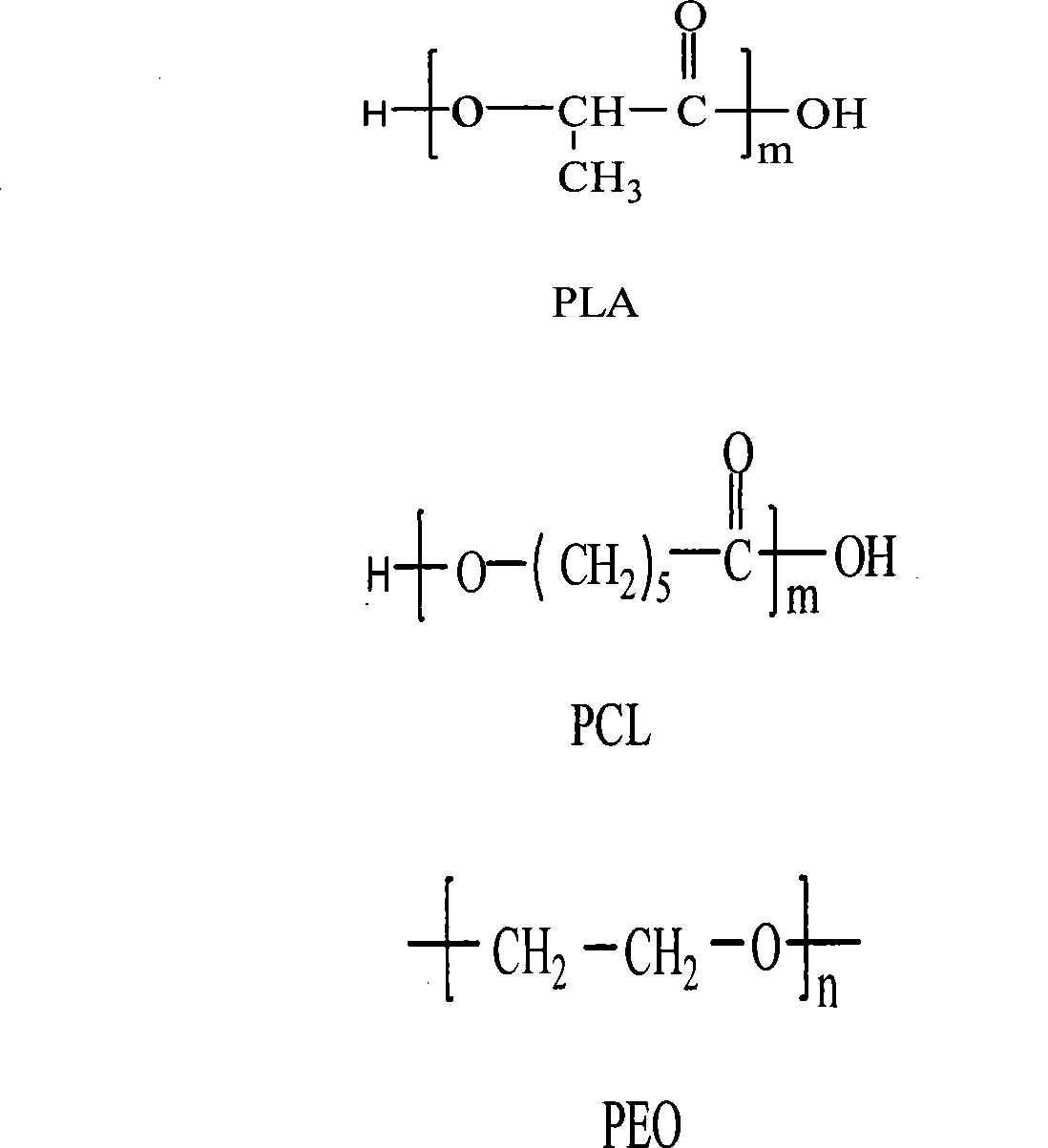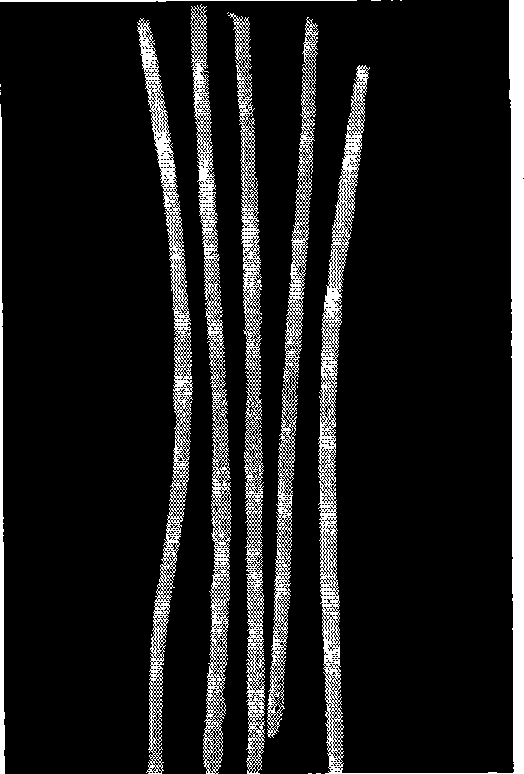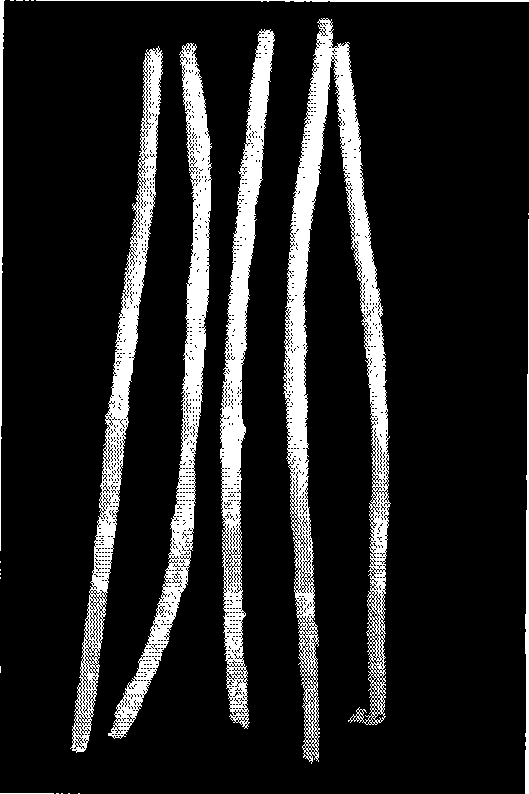Ureteric branches support and preparation method thereof
A ureteral and biological technology, applied in stents, medical science, surgery, etc., can solve the problems of unfavorable biologically active factors and drug coating, and achieve the effect of reducing the coefficient of friction
- Summary
- Abstract
- Description
- Claims
- Application Information
AI Technical Summary
Problems solved by technology
Method used
Image
Examples
Embodiment 1
[0034] Embodiment 1, the preparation of polyε-caprolactone (PCL) ureteral stent
[0035]In this embodiment, the following three kinds of polyε-caprolactone (PCL) ureteral stents were prepared, and the specific preparation methods were as follows:
[0036] 1. First prepare 20ml, 2% (g / mL) PCL / THF solution (PCL is purchased from Aldrich, product number 440752), and then use a 1mm diameter tube coated with silicone oil (Beijing Chemical Reagent Company, product number 18142) Dip the glass rod into the PCL solution, let it dry slightly, and then dip it again. Repeat the above steps until the tube wall reaches 0.1mm. Finally, after THF was completely volatilized at room temperature, the tube was removed from the glass rod to obtain a PCL ureteral stent (see figure 2 ).
[0037] 2. First prepare 20ml of 15% (g / mL) PCL / THF solution (PCL is purchased from Aldrich, product number 440752), and then use a 1mm diameter tube coated with silicone oil (Beijing Chemical Reagent Company, pr...
Embodiment 2
[0039] Embodiment 2, containing developing agent BaSO 4 Preparation and application of polyε-caprolactone (PCL) ureteral stent
[0040] 1. Preparation of ureteral stent
[0041] Prepare the following three kinds of polyε-caprolactone (PCL) ureteral stents, the specific preparation method is as follows:
[0042] 1. First prepare 20ml, 2% (g / mL) PCL / THF solution (PCL is purchased from Aldrich, product number 440752), and add BaSO to the solution 4 Until the concentration is 5%, continue to stir and disperse, then use a glass rod with a diameter of 1mm coated with silicone oil (Beijing Chemical Reagent Company, product number 18142) to reversely dip the PCL solution, and then dip it after slightly drying, repeat the above step until the pipe wall reaches 0.1mm. Finally, after THF is completely volatilized at room temperature, the tube is removed from the glass rod to obtain a solution containing BaSO 4 PCL ureteral stent.
[0043] 2. First prepare 20ml of 10% (g / mL) PCL / THF ...
Embodiment 3
[0049] Example 3. Preparation of polylactic acid / glycolic acid copolymer (PLGA) ureteral stents with different hydrophilicity
[0050] In this embodiment, the following three kinds of polylactic acid / glycolic acid copolymer (PLGA) ureteral stents were prepared, and the specific preparation methods were as follows:
[0051] 1. First prepare 20ml, 2% (g / mL) PLGA / acetone solution (PLGA is purchased from Aldrich, product number 430471, LA:GA=85:15), and then use the surface coated with silicone oil (Beijing Chemical Reagent Company, product Dip a glass rod with a diameter of 1 mm (Product No. 18142) into the PLGA solution, let it dry slightly before dipping it, and repeat the above steps until the tube wall reaches 0.1 mm. Finally, after the THF was completely volatilized at room temperature, the tube was removed from the glass rod to obtain the PLGA ureteral stent.
[0052] 2. First prepare 20ml of 10% (g / mL) PLGA / acetone solution (PLGA is purchased from Aldrich, product number ...
PUM
| Property | Measurement | Unit |
|---|---|---|
| Diameter | aaaaa | aaaaa |
Abstract
Description
Claims
Application Information
 Login to View More
Login to View More - R&D
- Intellectual Property
- Life Sciences
- Materials
- Tech Scout
- Unparalleled Data Quality
- Higher Quality Content
- 60% Fewer Hallucinations
Browse by: Latest US Patents, China's latest patents, Technical Efficacy Thesaurus, Application Domain, Technology Topic, Popular Technical Reports.
© 2025 PatSnap. All rights reserved.Legal|Privacy policy|Modern Slavery Act Transparency Statement|Sitemap|About US| Contact US: help@patsnap.com



